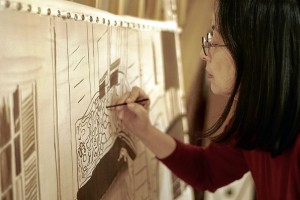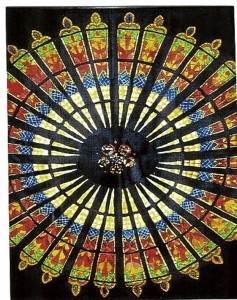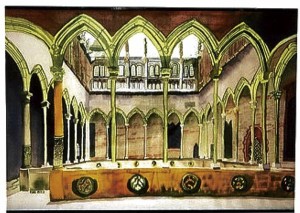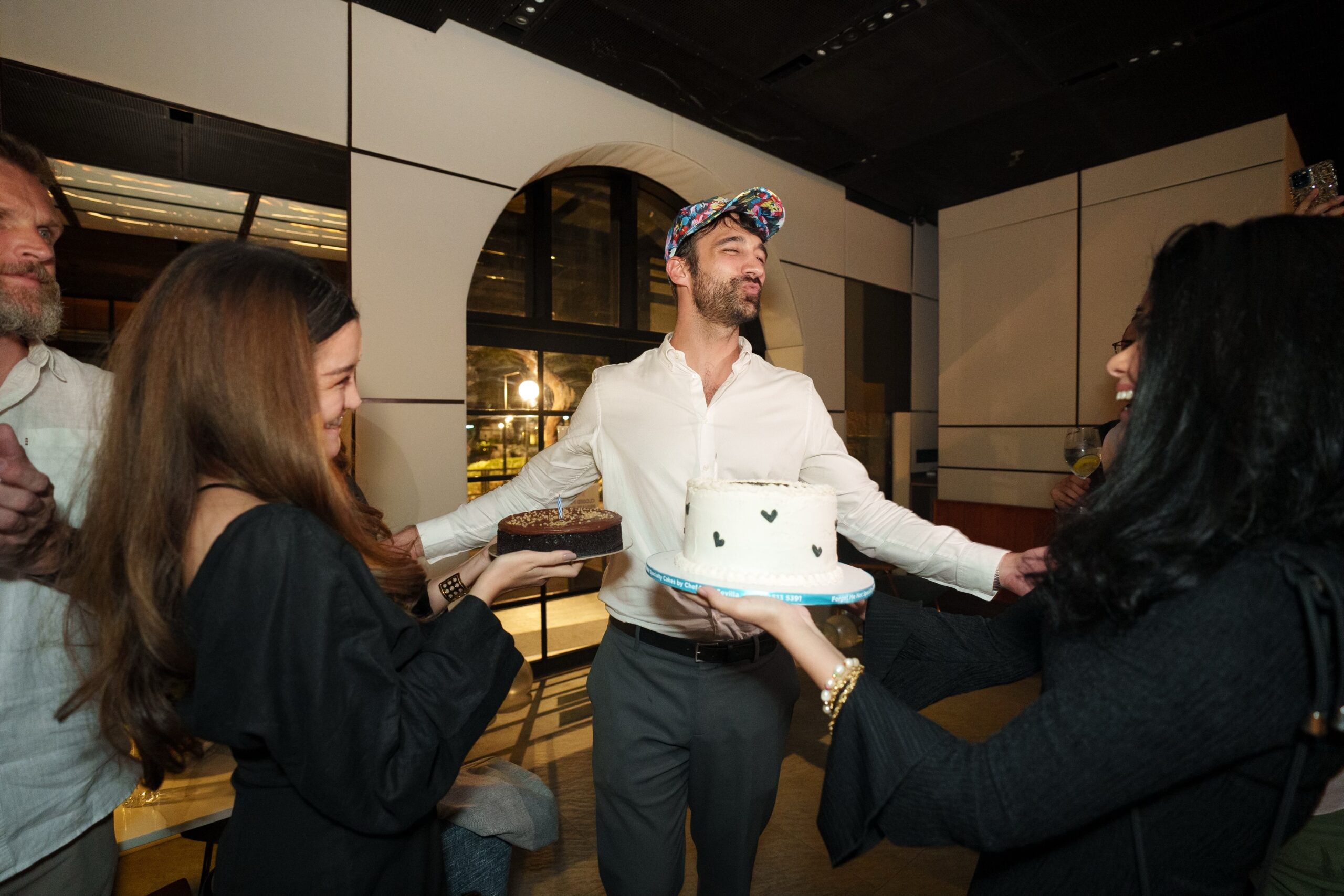
Marissa Gonzalez’s latest paintings are hand-painted on jusi, the raw silk material used for barong Tagalog and other formal Filipino wear. The suite of works will be exhibited in “The Road to Silence,” at Ayala Museum’s New ArtistSpace, with opening-day cocktails on Feb. 1, 6 p.m.
Born in the Philippines, Marissa had her early education at the Assumption Convent, with adolescent years spent in Madrid when her father, Ambassador Luis Gonzalez, headed the Philippine diplomatic mission there. Her mother was the late Vicky Quirino-Delgado (whose first husband was Luis Gonzalez); she is a granddaughter of President Elpidio Quirino.
She works in Geneva at the International Organization for Migration (IOM). She studied silk-painting techniques with Eliette Pignard in France, and drawing techniques with Maitre J.P. Grelat in Geneva.
Why jusi?
Jusi reminds her of the Philippines: “It is found only here, unlike watercolor paper, cardboard, wood and canvas, which can be found anywhere. That is why after each trip to Manila, I return with yard after yard of jusi.”
As a medium, jusi has its advantages as well: “It has the smooth and sensual feel of silk, without the smearing of paint and the lightness of watercolor on paper. It gives the illusion of being very delicate, but is strong enough to be worn, washed and ironed day in and day out, not to mention embroidered, and now painted.”
Process and technique
Her works are basically watercolors on fabric. The paint used is fabric paint especially formulated for silk and wool. The wetting agent is not water but alcohol, which means the artist has to work fast because the paint dries faster. The techniques used are: batik; wet-on-wet, wet-on-dry straight painting.
She follows the dimensions of the material, with normal weft width of 93 cm (36 in, or one yard). The length varies, but not longer than 150 cm (59 in).
No matter how large the works are, they do not take up so much space, as they are thin and float in the wind. This gossamer, almost ethereal quality is what she appreciates most in the jusi material.

The challenges encountered while painting with this medium are not insignificant. Because they are watercolors, she cannot paint the images layer by layer.
The margin for error is practically zero. One has to load the brush with just the right amount of paint, or else there will be smears, paint runs and bleeds.
She also has to paint fast, to avoid watermarks that can ruin a painting.
Because of the size and the material, she paints while seated on the floor with the jusi tacked on a support to stretch it out, and it is quite tiring on the back.
She starts with light colors and finishes with dark ones, which is the exact opposite of acrylic- and oil-painting techniques.
It is backbreaking work, but painting on jusi is a very gentle process that the artist obviously enjoys.
Jusi paintings must not be exposed to direct sunlight, just like with a watercolor. If one wishes to frame the painting, it should be protected with a passé-par-tout border, and should be kept from direct contact with the glass.

Jusi paintings are actually best kept as wall hangings, as the artist intended them to be.
Childhood in Europe
The years spent in Europe are remembered with fondness: “My first friends were the children of the famous matadors Luis Miguel Dominguin and Antonio Ordoñez. Most Sundays were spent in the bullring of Las Ventas in Madrid, where we were educated on the finer points and structure of a corrida. The visuals, the ambience, the people, the noise, the music and the sheer tension left an indelible memory in my mind.”
There are “olfactory memories,” too. “I will never forget the smell of the lavender flowers in our garden, or the residual scent of incense in a church. Falling asleep in the garden under a huge and leafy tree on a balmy summer day is also a favorite memory.
“Looking at the sky and watching for falling stars was something I also remember sharing with my sisters and friends. Our father was an avid road traveler, and each free moment we had, we were on the road visiting other cities in Spain and other countries in Europe.”
Long drives are still a favorite pastime that Marissa enjoys with her life partner Leo and daughter Audrey.
It was a charmed life with her family in a foreign city, with old and newfound friends: “Memories of growing up in a city where taking public transport was safe, and where the weekend challenge was how to stretch my allowance to include a bus ride, a movie ticket and my favorite merienda with my best friend, weave the fabric of a young teenager who danced in teenie-bopper afternoon discos. The elder adolescent felt the thrill of dancing in a sophisticated night disco, dancing the night away to the passion of flamenco, and feasting on churros con chocolate as dawn broke.”
Of her Vigan roots: “I will never forget a trip I made with my Pacis and Mendoza relatives during the fiesta. It was like going back in time into another world and another century where time stood still.”
Interior journey
“The Road to Silence” is a testament to the things Marissa loves: “architectural subjects, and those that inspire peaceful and spiritual thoughts.”
There are a number of rosette windows: intricate and colorful, and a means to enlightenment, just as they were designed for Medieval and Renaissance cathedrals.
“My biggest challenge is how to apply the right amount of shadow for the light to come out,” she said. “That is also the way to bring out the volume in the objects.”
Gonzalez is enamored with tromp l’oeil: “My ambition is to be a hyperrealist. When people say my work looks like a picture, I am flattered, not upset, for that is what I am striving for.”
Having exhibited in group shows since 1995, and in solo shows in Geneva, New York and Helsinki, Gonzalez has always wanted to have a solo exhibit in Manila.

Many years ago, she visited the late Sonia Ner, curator of Ayala Museum, together with her mother and sister Ruby. Sonia, whom she considers a friend and mentor, gave her advice on how to organize a show. This exhibition at the New ArtistSpace is a realization of that dream, and a return to family and friends, and a part of her peregrinations.
And why does she paint?
“It focuses me. It centers me. It calms me and makes me happy. If I do not paint, I get sad after a few days. It is a way of life now, like eating and sleeping. It validates me and it assuages my many insecurities. It balances me and gives purpose to my life. It challenges me.”









































